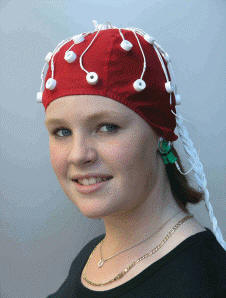This technology, called electroencephalogram (EEG) or quantitative electroencephalogram (qEEG), has been around for many years. It can help diagnose ADHD by detecting brain-wave patterns that are distinctive to people with ADHD. People with ADHD have areas of their brains that are *under-aroused* or hypoaroused. When the ratio of under-aroused brainwaves is greater to active brain waves, it may indicate a disorder that responds well to stimulant medication. As stated by Edward Hallowell and John Ratey in Delivered from Distraction(2006), “New studies have shown that people who show the characteristic pattern of cortical hypoarousal are likely to respond well to stimulant medication. This provides an elegant physiological link between diagnosis and treatment” (p. 124).
Very recently — July, 2013 (9 years after Delivered from Distraction was published!), the NY Times reported that this method has finally been approved by the Food & Drug Administration. So, if you are unsure whether you or your child has ADHD, this non-intrusive test can help you determine the diagnosis.
From the New York Times, https://www.nytimes.com/2013/07/16/health/brain-test-to-diagnose-adhd-is-approved.html: “The test uses an electroencephalogram, or EEG, with sensors attached to a child’s head and hooked by wires to a computer to measure brain waves. … The test takes 15 to 20 minutes, and measures two kinds of brain waves — theta and beta. Certain combinations of those waves tend to be more prevalent in children with A.D.H.D.”

Pingback:The “Myth” of ADHD? | Carolyn Patterson, Educational Therapist/Professional (ET/P)